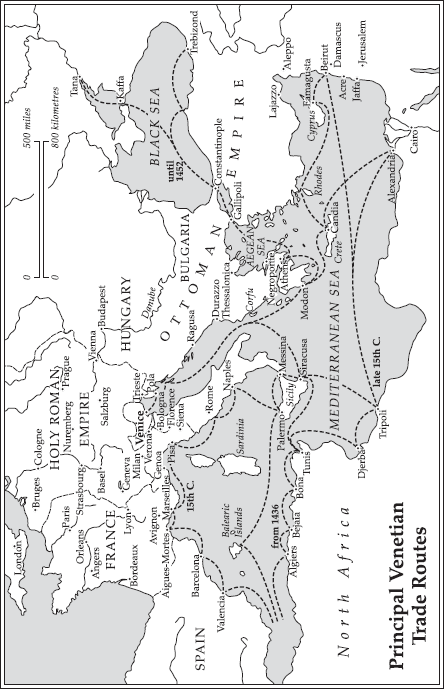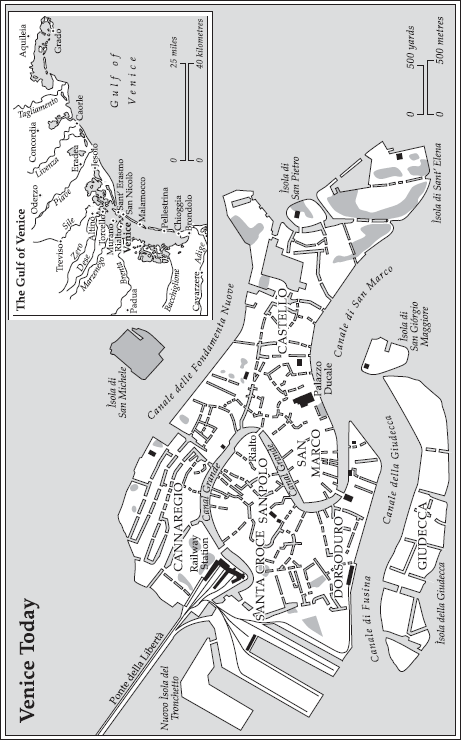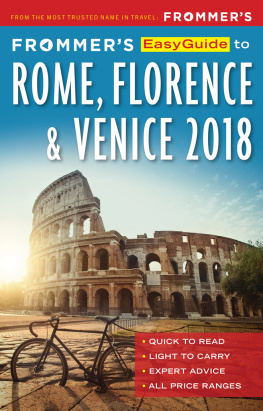Elizabeth Horodowich is an associate professor of history at New Mexico State University. She earned her BA from Oberlin College in Ohio in 1992 and her Ph.D in European history from the University of Michigan in 2000. She has published articles in journals such as Past and Present, Renaissance Studies, and The Sixteenth Century Journal. Her first book, Language and Statecraft in Early Modern Venice (Cambridge, 2008) considers speech acts and foul language in sixteenth-century Venice. She has received scholarly grants and fellowships from numerous organizations, including the National Endowment for the Humanities and Harvard Universitys Villa I Tatti. Professor Horodowich lived in Venice for six years and always looks forward to returning to the watery city.
Titles available in the Brief History series
A Brief History of 1917: Russias Year of Revolution
Roy Bainton
A Brief History of the Birth of the Nazis
Nigel Jones
A Brief History of the Circumnavigators
Derek Wilson
A Brief History of the Cold War
John Hughes-Wilson
A Brief History of the Crimean War
Alex Troubetzkoy
A Brief History of the Crusades
Geoffrey Hindley
A Brief History of the Druids
Peter Berresford Ellis
A Brief History of the Dynasties of China
Bamber Gascoigne
A Brief History of the End of the World
Simon Pearson
A Brief History of the Future
Oona Strathern
A Brief History of Globalization
Alex MacGillivray
A Brief History of the Great Moghuls
Bamber Gascoigne
A Brief History of the Hundred Years War
Desmond Seward
A Brief History of Medieval Warfare
Peter Reid
A Brief History of Misogyny
Jack Holland
A Brief History of Medicine
Paul Strathern
A Brief History of the Private Lives of the Roman Emperors
Anthony Blond
A Brief History of Science
Thomas Crump
A Brief History of Secret Societies
David V. Barrett
A Brief History of the Age of Steam
Thomas Crump
A Brief History of Stonehenge
Aubrey Burl
A Brief History of the Vikings
Jonathan Clements
A BRIEF HISTORY OF
VENICE
A New History of the City and Its People
ELIZABETH
HORODOWICH

Constable & Robinson Ltd
5556 Russell Square
London WC1B 4HP
www.constablerobinson.com
First published in the UK by Robinson,
an imprint of Constable & Robinson, 2009
Copyright Elizabeth Horodowich, 2009
The right of Elizabeth Horodowich to be identified as the author of this work has been asserted by her in accordance with the Copyright, Designs and Patents Act 1988
All rights reserved. This book is sold subject to the condition that it shall not, by way of trade or otherwise, be lent, re-sold, hired out or otherwise circulated in any form of binding or cover other than that in which it is published and without a similar condition including this condition being imposed on the subsequent purchaser.
A copy of the British Library Cataloguing in Publication
Data is available from the British Library
UK ISBN 978184529-611-7
eISBN 978-1-47210-774-9
1 3 5 7 9 10 8 6 4 2
First published in the United States in 2009
by Running Press Book Publishers
All rights reserved under the Pan-American and International Copyright Conventions
This book may not be reproduced in whole or in part, in any form or by any means, electronic or mechanical, including photocopying, recording, or by any information storage and retrieval system now known or hereafter invented, without written permission from the publisher.
9 8 7 6 5 4 3 2 1
Digit on the right indicates the number of this printing
US Library of Congress Control Number: 2009920962
US ISBN 9780-7624-3690-3
Running Press Book Publishers
2300 Chestnut Street
Philadelphia, PA 191034371
Visit us on the web!
www.runningpress.com
Printed and bound in the EU
To Steve and Louis,
and all my friends in Venice with whom I have shared the city.

CONTENTS

INTRODUCTION
The first time I went to Venice was in the autumn of 1991 as an American exchange student from Oberlin College in Ohio. Like other college students, I had studied Venice and its art and architecture, and had read about its gondolas, canals, pigeons and museums. I had seen many images of the city of the alleys and public squares, the Bridge of Sighs and the Ducal Palace and had come prepared (or so I thought) to see it for myself.
I arrived in the city by train: an approach that does not afford the grand spectacle offered to visitors who arrive by boat, as most have done throughout the history of the city, but an approach that is perhaps even more perplexing. Leaving the station, despite my preparation and book knowledge of the citys topography, I nevertheless instinctively expected to smell exhaust and hear the buzz of traffic as in every other major Italian city. I wearily shook off the lull of the train and prepared to steel myself against the clamour and confusion of urban life outside the station. Instead, I stepped out into a quiet world. Not that it was silent, but something seemed amiss. When things came into focus, I noticed that between me and a row of buildings, where a street should have been, there glittered instead a wide green canal lapping at its banks and a boat or two streaming along it in either direction. The impression of the scene was powerful. Despite the fact that I had seen similar images in slides and textbooks and in my minds eye hundreds of times, somehow nothing could have prepared me for the first impact it made in real time. As I stared, I began to understand more profoundly than before that things here were not put together in any normal way. Though perhaps not as dramatic as a panorama from a mountaintop or a sweeping vista down a wide and bustling urban avenue, the effect of this landscape was entirely disconcerting, no matter how many times I had seen it reproduced before. I put down my bag for a moment, blinking into the dazzling glare of light, stone and water, and taking in the seemingly incomprehensible. This could not be a city of water and boats instead of streets and cars and yet, it was.
My experience was, of course, hardly exceptional. Writers and historians through the ages have commented on the breathtaking nature of their arrival in the city of Venice, whether by boat, train, bus or plane, and on the sense of wonder and confusion generated by this city perched on water. It is not just the shifting light and colour of the sea that startles; Venetian architects and builders have seemingly defied the properties of stone so that the citys palaces and churches, its squares and towers, appear to float rather than sit on the surface.
Introducing a history of Venice with such a description is not meant to romanticize it. Like many other cities, Venice is both wonderful and difficult, delightful and frustrating, accessible and outrageously expensive. The Venetians are both friendly and (as we shall see, perhaps justifiably) rude. I describe my sense of confusion associated with my first moments in Venice because I believe it neatly reflects the sense of bewilderment that many scholars have experienced in approaching the citys history. Almost everyone who has poured over its records and read its texts has come up with more questions, paradoxes, myths and mysteries than concrete conclusions or exacting, stable narratives. Jacob Burckhardt, the nineteenth-century Swiss art historian and one of the first modern scholars of Italian culture, famously stated that while Florence was the city of incessant movement, which has left us a record of the thoughts and aspirations of each and all, Venice, in contrast, was the city of apparent stagnation and of political secrecy [that] recognized itself from the first as a strange and mysterious creation. Not unlike the dazed tourist who looks upon the incomprehensible, Burckhardt remained bewildered by what he perceived as the ever-shifting and impenetrable nature of the Venetian world. Rather than try to unwrap its mysteries, he focused the bulk of his scholastic energy on Florence and the Italian courtly cities and left Venice largely untouched.
Next page







![Bosworth - Italian Venice: a history[Electronic book]](/uploads/posts/book/194557/thumbs/bosworth-italian-venice-a-history-electronic.jpg)





